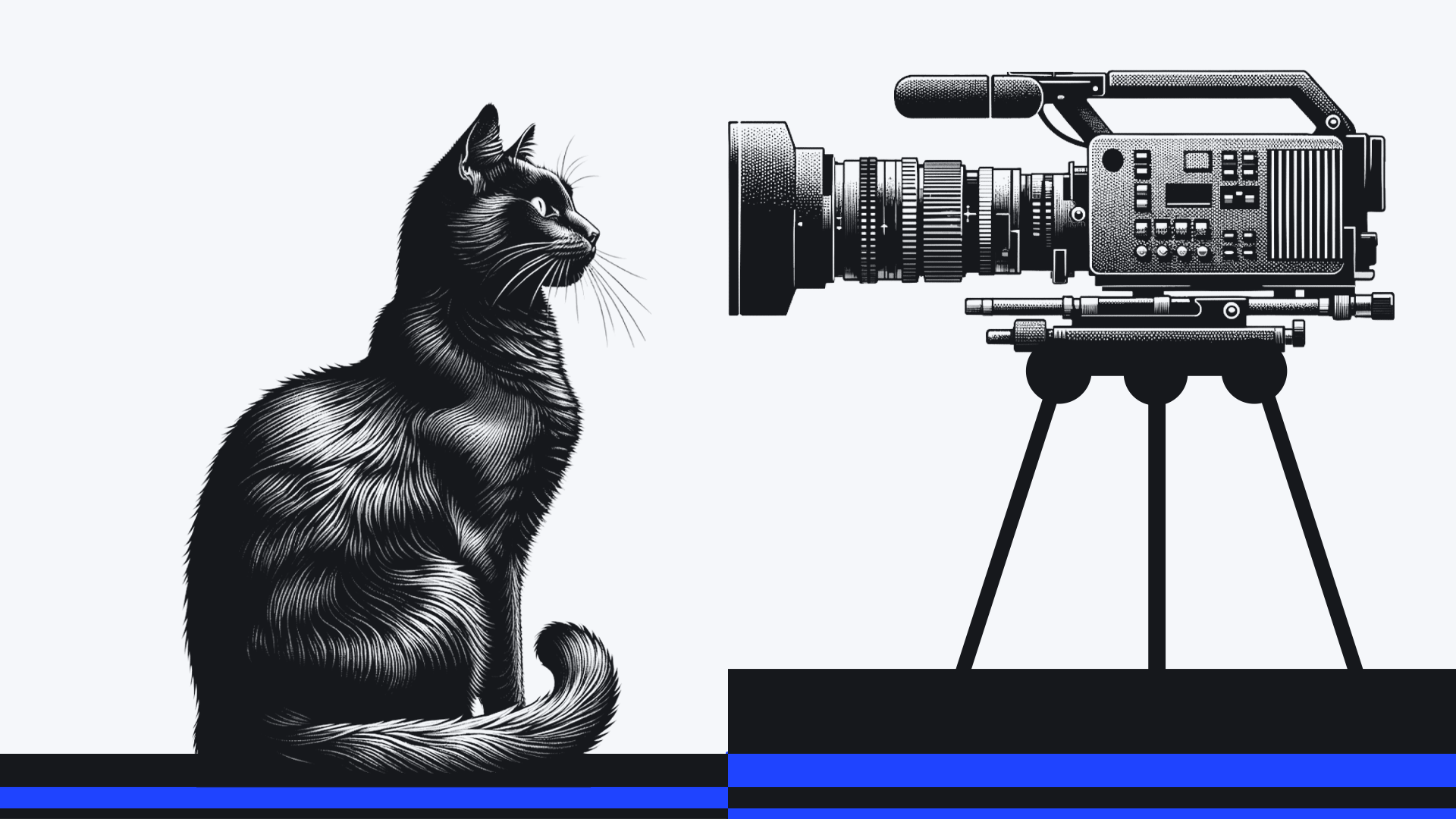August 3, 2022
Stop Fighting Social Algorithms And Do This Instead

There’s one unfortunate trend that keeps social media managers up at night: Organic reach is declining for brands, as most platforms shift attention to pay-to-play. However, the best way to reduce your reliance on paid social is to learn how to play the game of social first content.
Developing a social first strategy enables you to focus on creating content with your social audience in mind, rather than trying to force existing content to work within the constraints of each social channel. This gives you a better chance of increasing your reach and engagement, attracting followers, and, ultimately, influencing leads and sales. So yes, if your current content calendar is filled with off-platform content (think blogs, articles, press releases and product announcements) this means you may have a social content problem.
The solution? Make the algorithm work for you. While the algorithm is meant to filter out irrelevant content, the sheer amount of content being posted – we’re talking 9281 tweets a second – means you run the risk of posting something that doesn’t get seen. We recommend harnessing the power of the algorithm by prioritizing content that keeps audience time and attention on the social platform, which, theoretically, will lead to social platforms prioritizing your content so your audience will actually see it.
Let’s check in on the priorities of two of the most important platforms for B2B brands — Twitter and LinkedIn – so you can start playing nice with the algorithms.
While all social platforms use machine learning to rank content, Twitter admits that its reliance on machine learning has made its algorithm a mystery, even to the folks at Twitter. What they can share is that an individual’s top Tweets are based on the accounts they interact with most and the content they engage with. Twitter has also shared that content is ranked based on recency such as timely events and trends, relevancy like accounts the individual has engaged with before, and engagement based on people in the individual’s network.
To take advantage of these factors, we recommend that our clients include:
Video: According to Twitter, videos should be 15 seconds or less. Subtitles can also help capture attention, as one source claims that upwards of 92% of people watch video with the sound off.
Polls: Widely debated topics that speak to your entire audience rather than a select portion are most likely to perform well since they are inclusive of what interests the widest potential audience.

Text Only Posts: Think standalone statements, as well as “call and response” posts that encourage engagement.

Images: Images are like billboards on the highway — they offer visual and easy-to-digest opportunities to grab attention mid-scroll.

Threads: Threads are a great way to repurpose long-form content like blog posts to make it social first, or to tell a story/convey a bigger idea.

LinkedIn’s algorithm ranks content based on three factors:
Personal connections and those an individual has interacted with in the past
Interest relevance such as the language of the post, affinity groups, hashtags, and people an individual follows
Engagement likely through AI evaluation and posts that saw quick engagement
We also know that relevance trumps recency on LinkedIn, which is why the default homepage feed is set to “top” posts (with the ability to switch to “recent” posts). Using hashtags, optimizing your post days and times based on when your followers are online, proactively encouraging engagement from followers, and using the “My Company” features for employees can all help get your posts seen.
It’s also a good idea to create a content strategy that aligns to the needs of your specific audience, prioritizes timely content, and utilizes the platform features (polls, documents, videos, etc). And remember — keep content on the platform whenever you can rather than driving traffic away with external links.
Video: Since video has the power to convey emotions, it’s a great tool to tell customer stories, repurpose content from webinars or live events, or to demonstrate how a new product or feature works.
Polls: Just like with Twitter Polls, LinkedIn Polls work best if you select a widely debated topic that speaks to your whole audience rather than a small subset. A handy engagement feature exclusive to LinkedIn Polls is that everyone who voted gets a notification prompting them to return to the poll to see the results after the polls close. This is where you could direct voters to a longer piece of off-platform content by commenting on the poll with a link.

Text Only: Use a short thought or sentence that packs a punch to encourage engagement.

Carousels: We have some serious carousel devotees on our social team because it is an incredibly effective tool to drive clicks and engagements, while also presenting information or telling a story in a visually appealing way. While we’ve been advocates for posting images as a PDF to hack the system and create makeshift carousels, LinkedIn is currently testing full Carousel functionality for some users. This is a great tactic to test if you are pulling information from multiple sources, or as a way to present blog content in a social first format.
Photos: Photos are a great way to elevate employees, share brand news, or highlight company culture – but avoid stock images at all costs! A personal or branded approach is much more effective and authentic.

Articles: LinkedIn Articles are blog posts that are hosted on LinkedIn instead of your website. While Articles are mostly used by personal pages, when done effectively by brands, they can be powerful thought leadership tools.
The bottom line is to work with the algorithms, not against them, to improve social performance. An organic social media strategy should focus on building community, spreading ideas and driving awareness, while your paid social media strategy can lean more heavily on demand generation goals. You will also get to know your audience better by seeing what they respond to, which will help feed your ongoing content engine.
Still curious? Check out our FAQ below to learn more.
FAQ
How can small businesses or startups with limited resources effectively implement a social-first content strategy?
- Focus on quality over quantity. Instead of trying to be everywhere all the time, small businesses can concentrate on creating fewer, but higher-quality, pieces of content that truly resonate with their audience. It's about making a meaningful impact with what you share.
- Leverage user-generated content. Encourage your community to share their own stories and experiences with your brand. It’s a cost-effective way to generate content that's authentic and engages your audience.
How can brands maintain authenticity while optimizing for social media algorithms?
- Stay true to your brand voice. Even as you adapt your content to perform well on social platforms, ensure that every post reflects your brand’s unique voice and values. Authenticity attracts, and your audience will appreciate consistency.
- Engage genuinely with your community: Don’t let automation or the chase for algorithmic favor overshadow the importance of real, human interactions on social media. Responding to comments, engaging in conversations, and acknowledging feedback can go a long way in maintaining your brand's authenticity.
Related Stories

Social Media for Executives: The Influence Economy Has Come for the C-Suite
Discover how top Inc. 5000 executives are driving influence and building credibility through authentic, human social media content.
October 20, 2025

From Upvotes to Influence: How Reddit Marketing is Redefining Brand Trust Online
Learn how Reddit marketing is reshaping brand trust, search visibility, and AI results in 2025, and how your brand can win on the platform.
October 9, 2025

The Rise of the Employee-Influencer: Why Your Best Advocates Might Already Be on Payroll
Explore the growing power of employee advocacy and how companies can harness the authentic voices of their teams to build trust, expand reach, and strengthen their brand.
July 28, 2025

The AI Power Players: Who’s Influencing the Narrative? And What Can Business Leaders Learn from These Voices?
Who’s shaping the conversation around AI, and how? We analyzed the data to spotlight the most influential voices driving public opinion, platform adoption, and policy.
March 27, 2025

LinkedIn Creators Are Changing the Game for B2B Marketing - Are You Ready?
Discover how LinkedIn creators can help humanize your B2B marketing, build trust, and drive stronger connections—an untapped opportunity many brands are missing.
November 18, 2024

Why Executive Communication Is More Critical Than Ever, and How to Do It Right
Learn why executive communications are key to building trust, engagement, and visibility, and how that impacts business results.
November 13, 2024

Level Up Your LinkedIn: The Profile Power Guide
Unlock the secrets to mastering LinkedIn and transforming your profile into a powerhouse of professional connections and opportunities. Ready to rock your LinkedIn presence? Click to dive in!
June 7, 2024

The Art of Listening: From Diverse Signals to Business Value
Measuring content strategies to determine what's driving the most value can be tricky. Here's what to think about when it comes to media measurement, social listening, and brand signal analysis.
May 21, 2024

Uncovering The “Who” Behind Your Social Audience
Discover how understanding your audience's diverse segments can unlock new strategies for engagement and growth—dive into the art and science of audience analysis.
June 5, 2023

How To Plan Ahead For a PR Crisis
Ever wonder how top brands navigate a PR crisis? Check out this guide to learn how to craft a solid strategy that will protect your brand's reputation.
October 6, 2022

The Unique Challenges And Opportunities Of B2B Influencer Marketing
Influencer marketing isn't just the realm of consumer marketers. See why it's a hidden gem for boosting trust and referrals for B2B, too.
July 6, 2022

5 Steps To Running A Smooth AMA On Social Media
Ready to host an AMA that sparks conversations and connects deeply with your audience? Dive into our five essential steps for a seamless social media event.
May 12, 2022